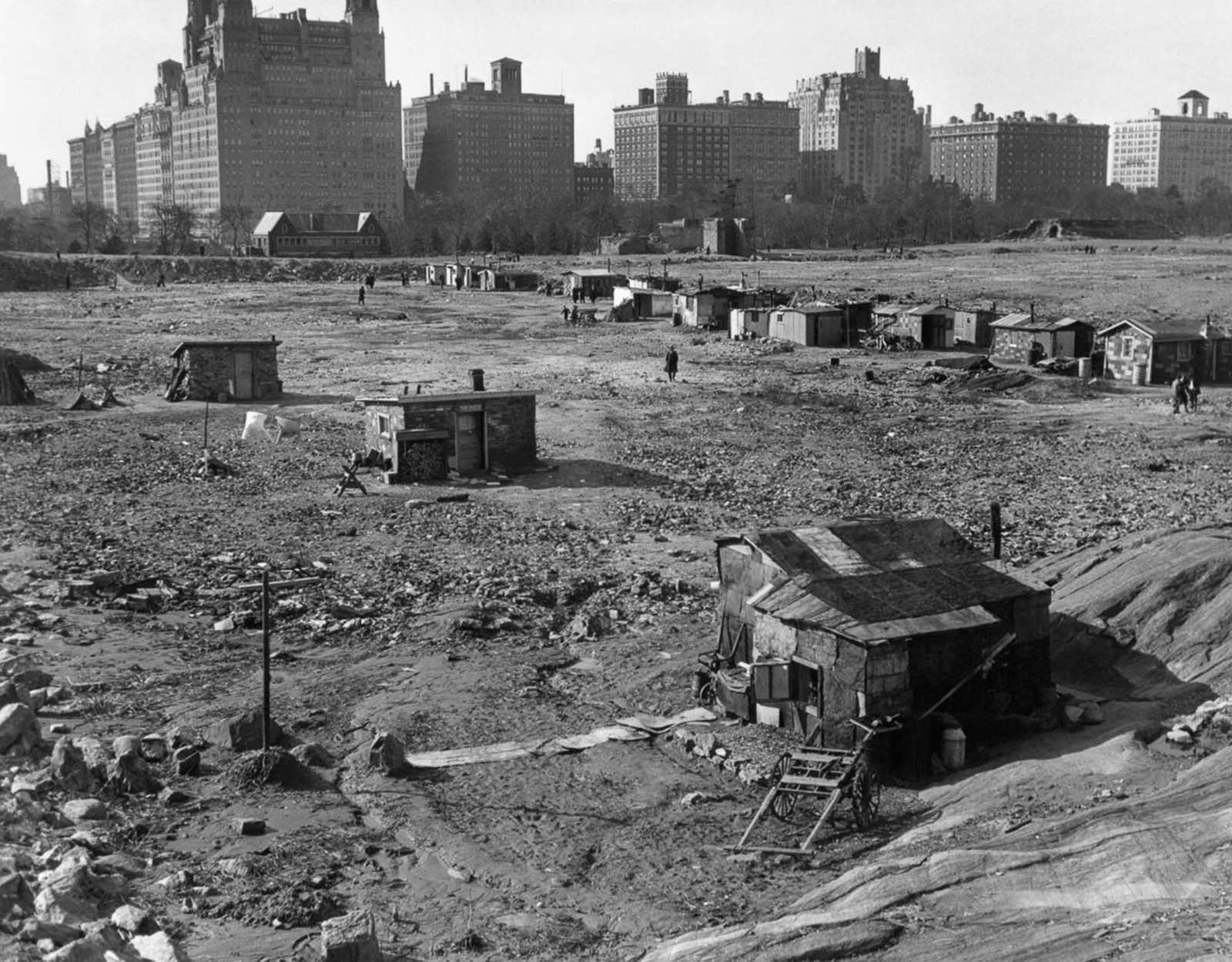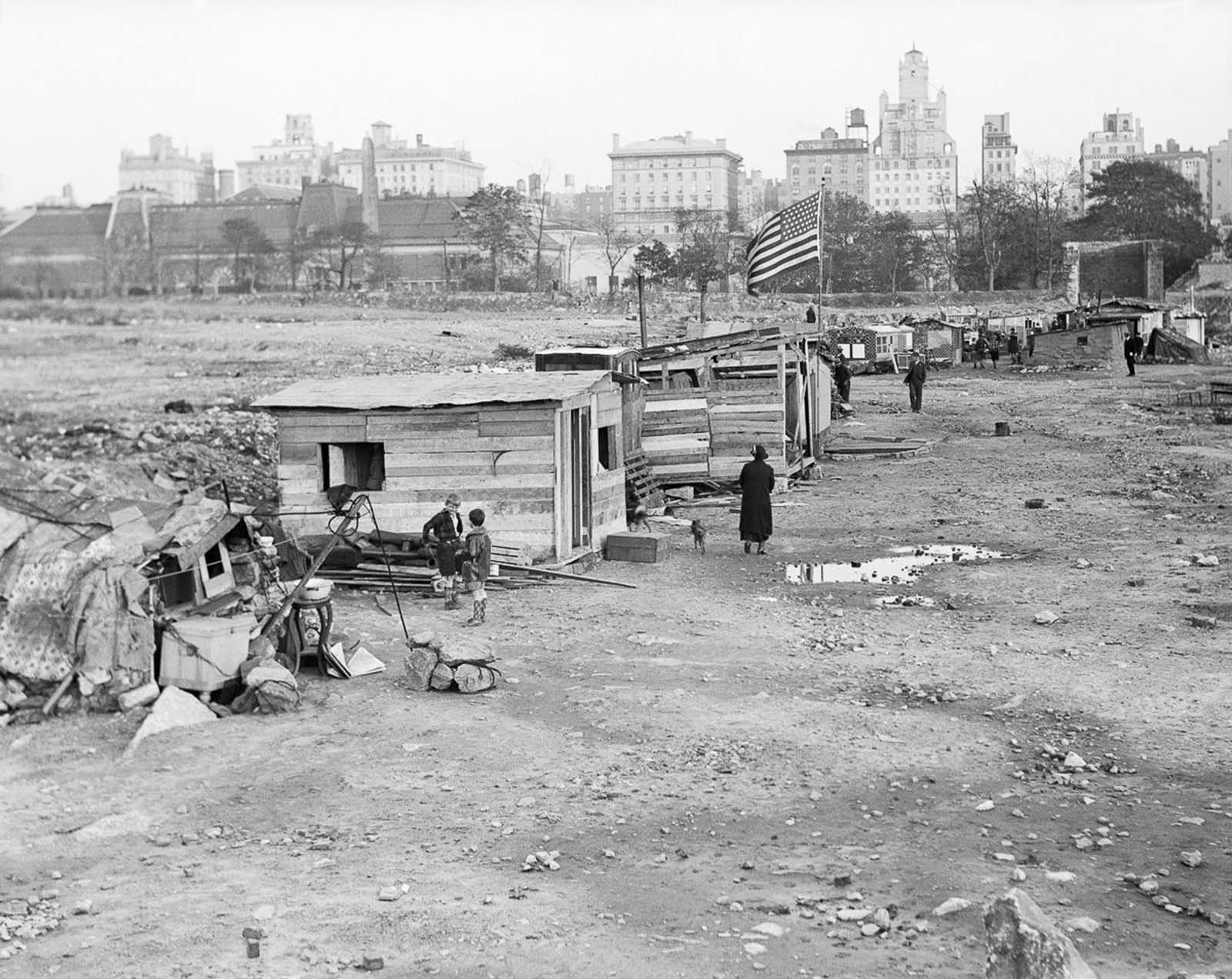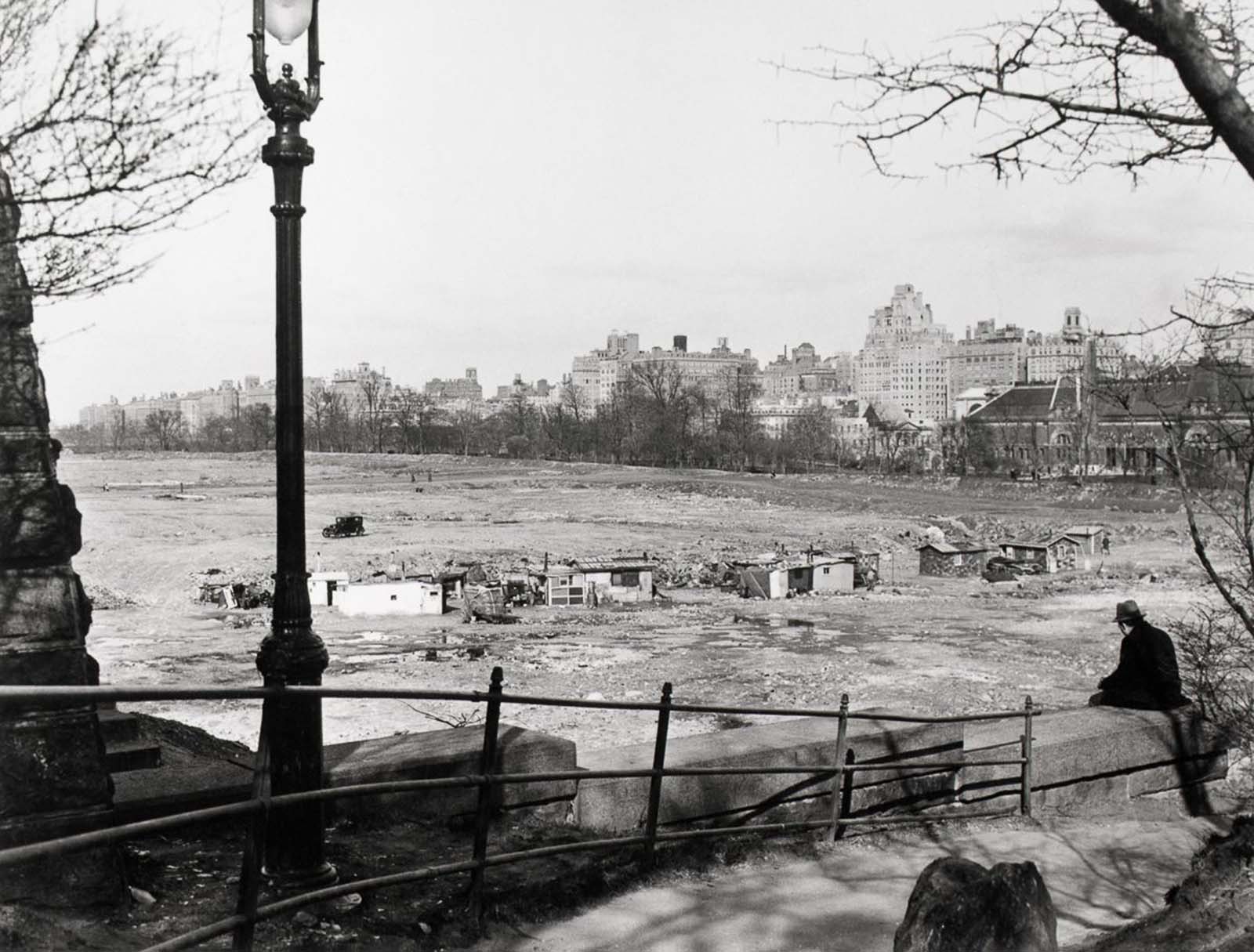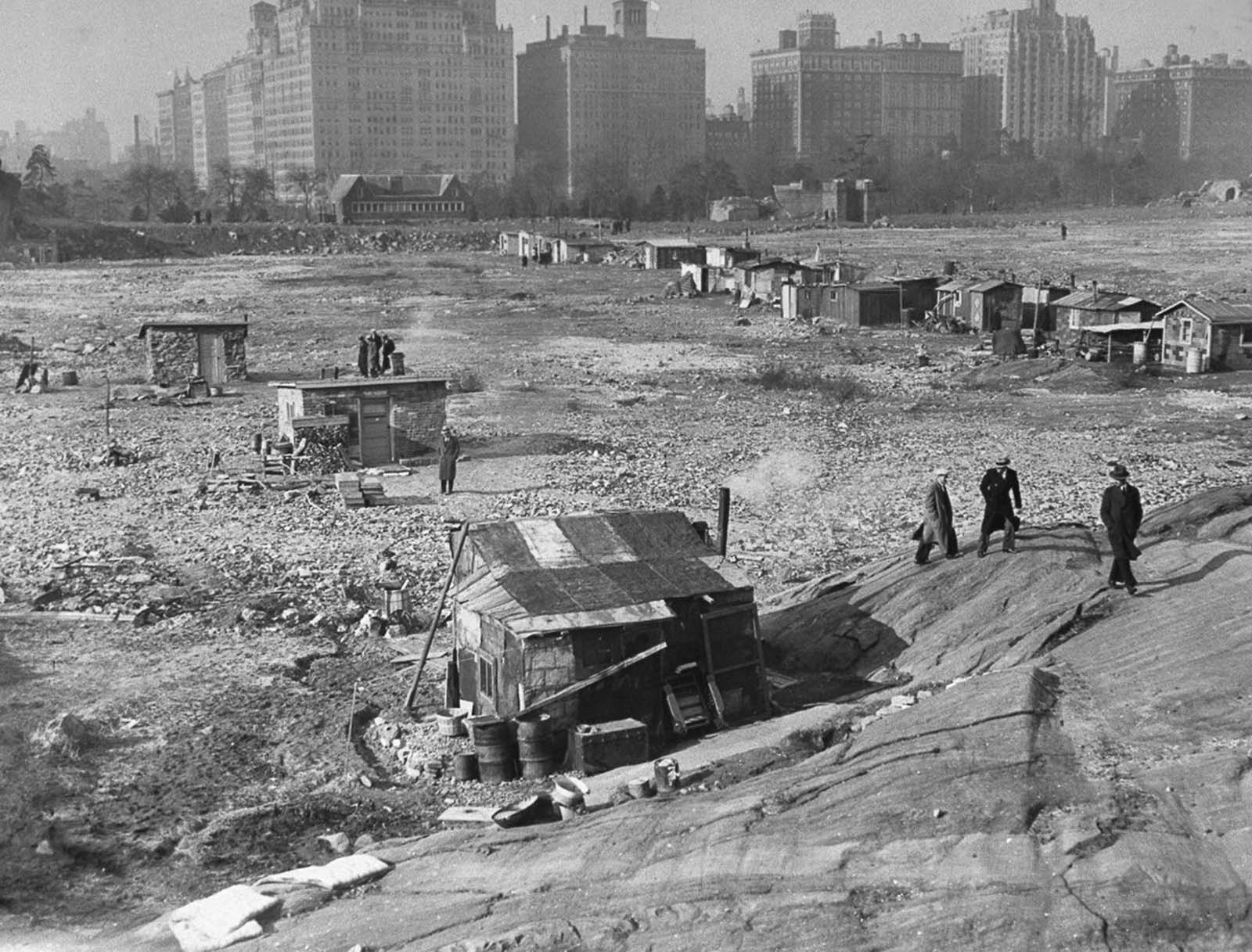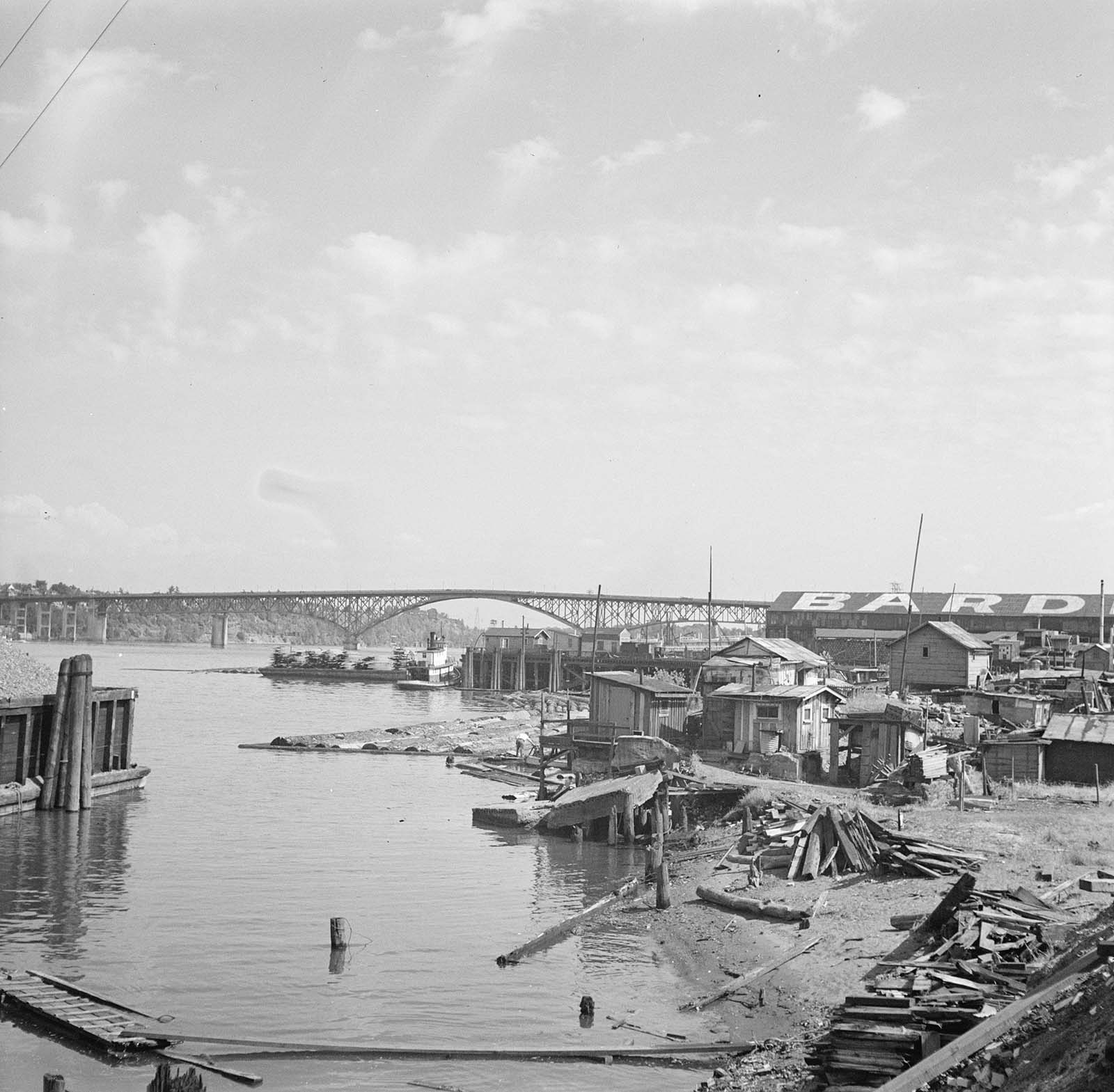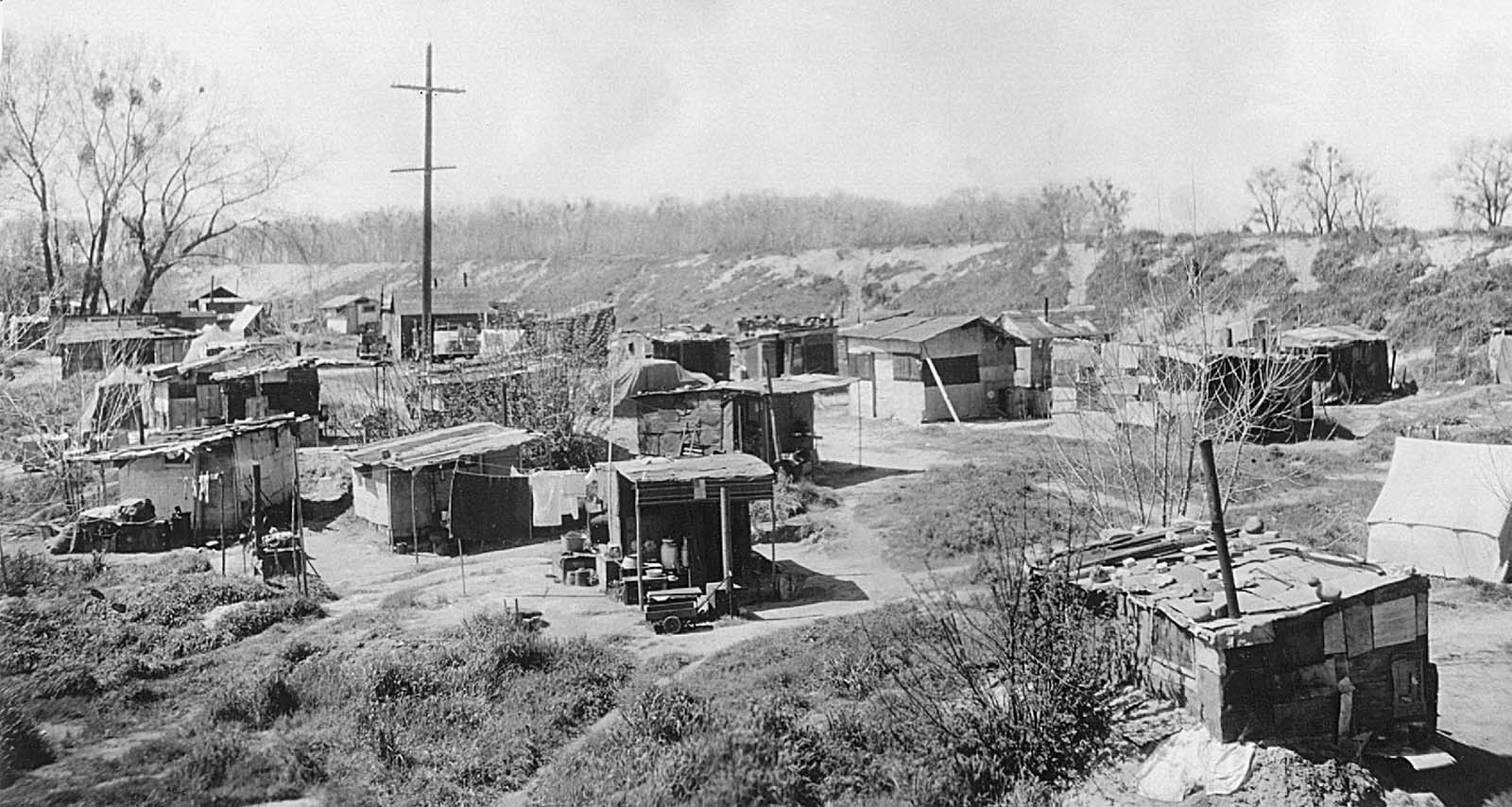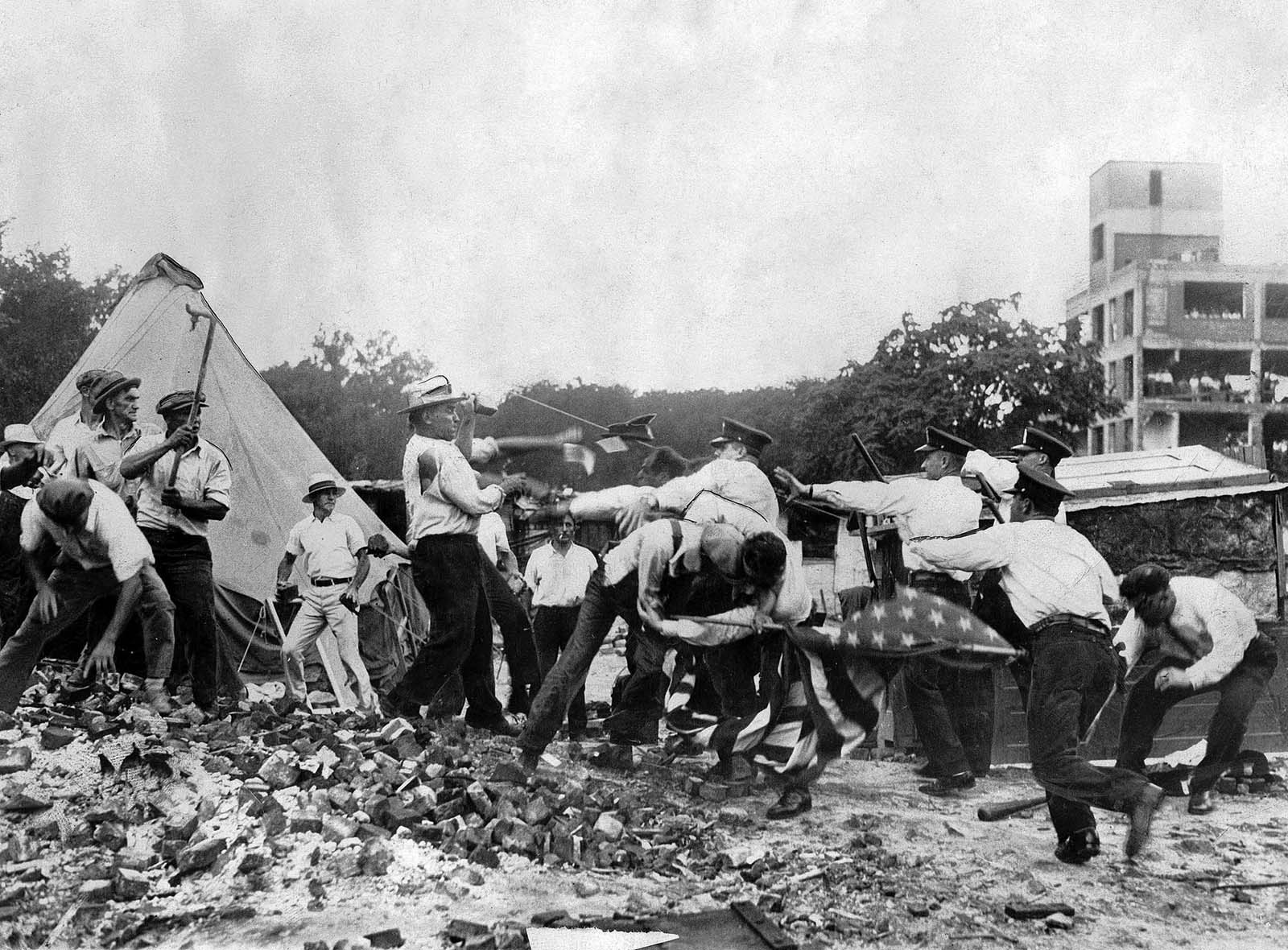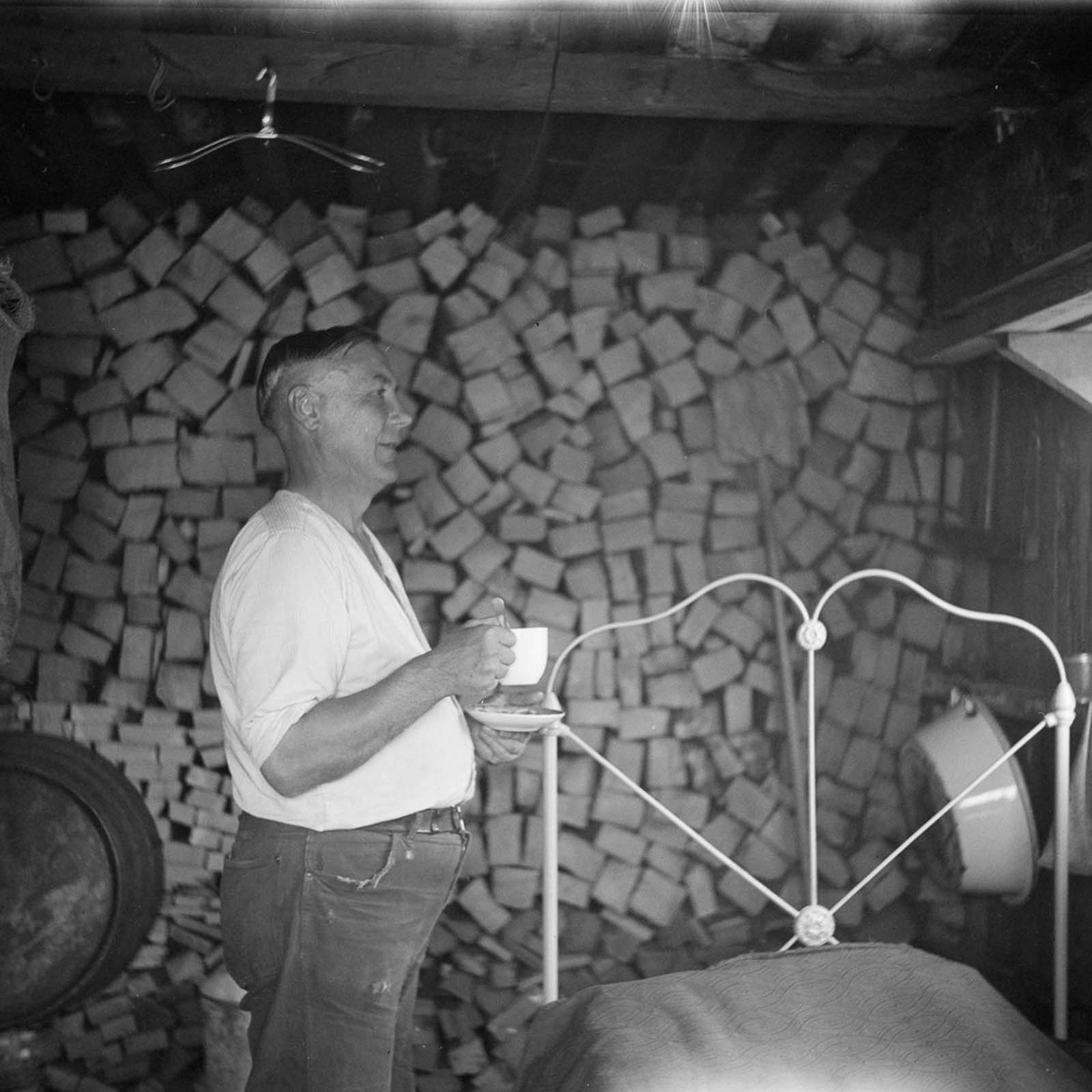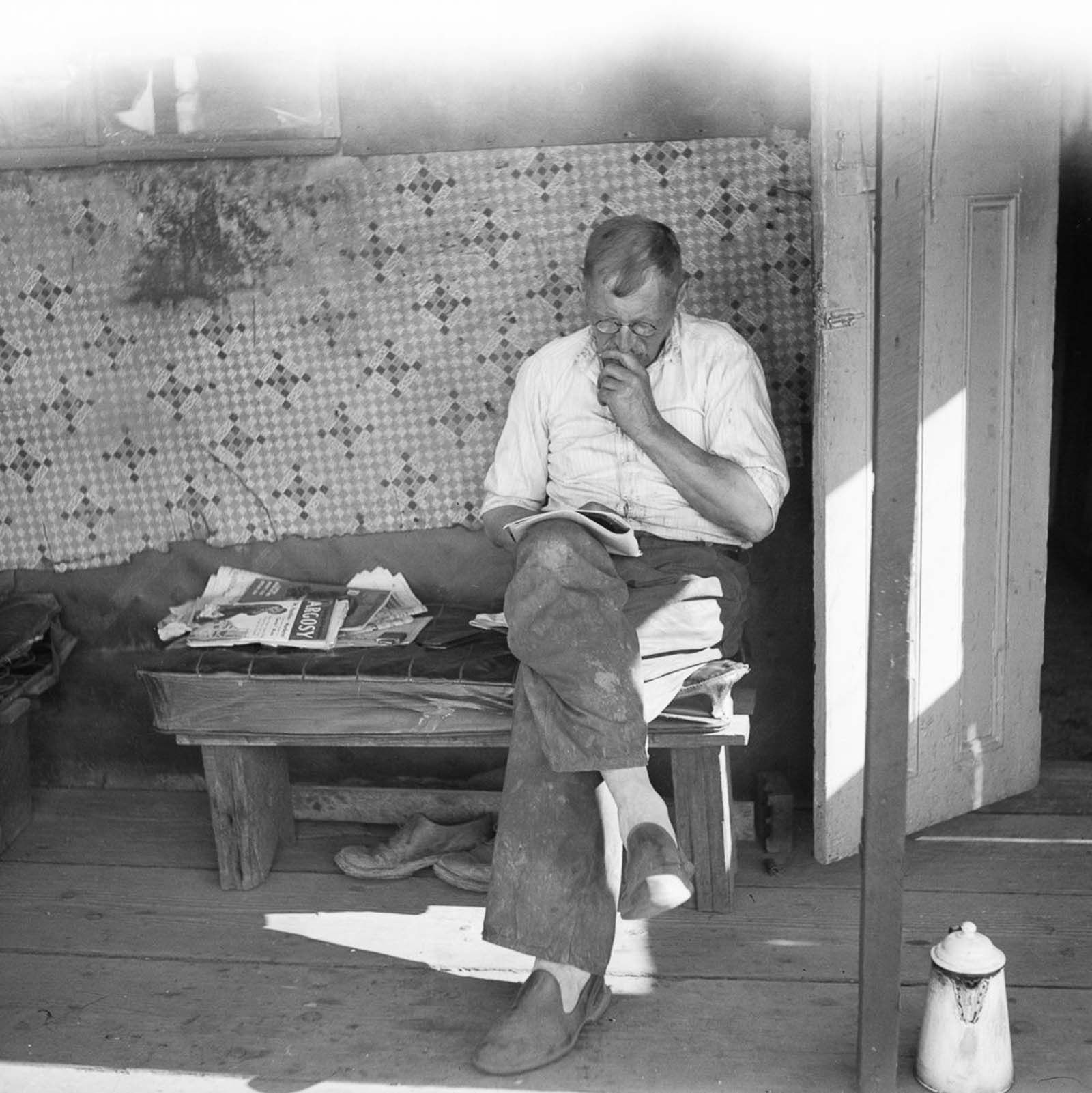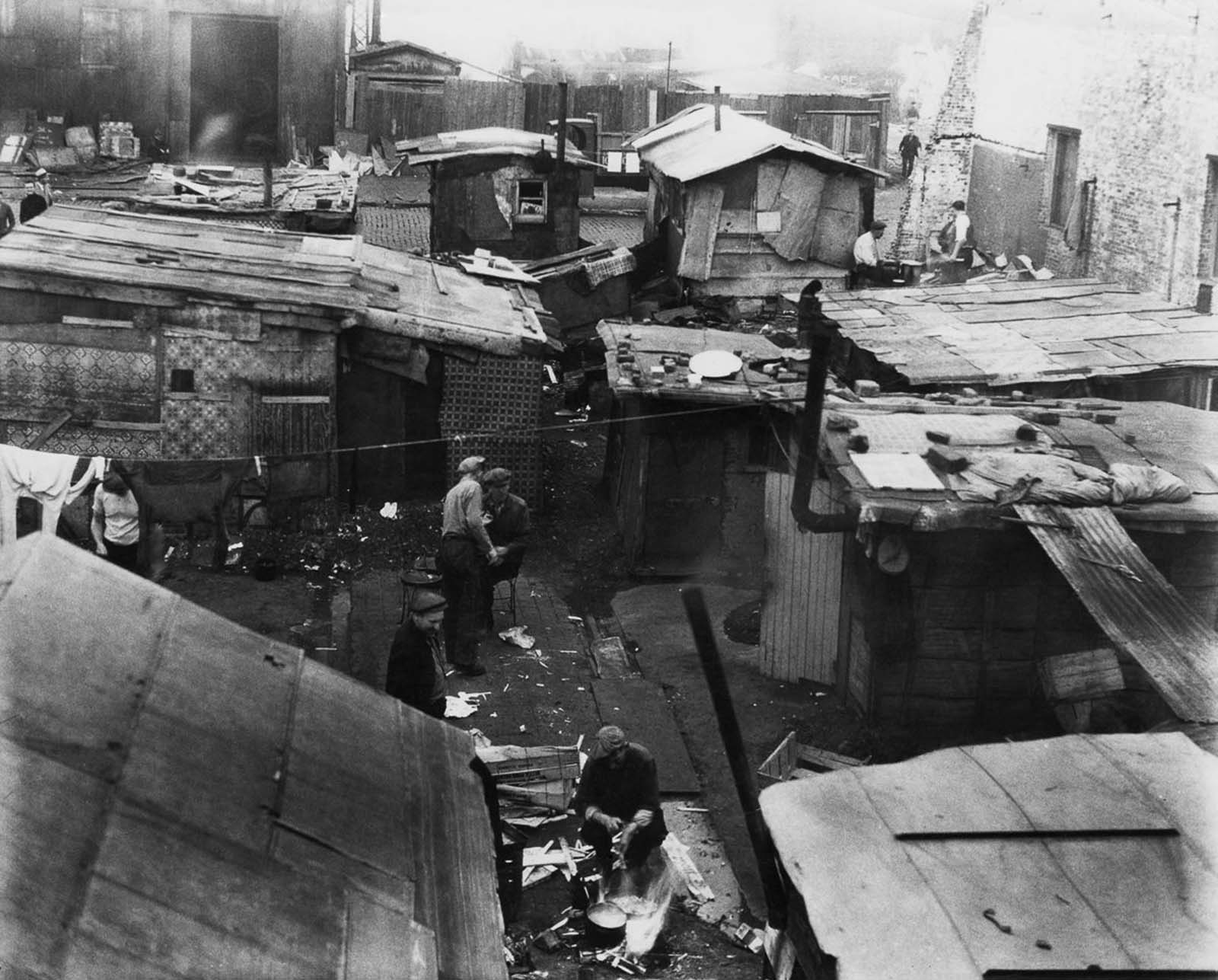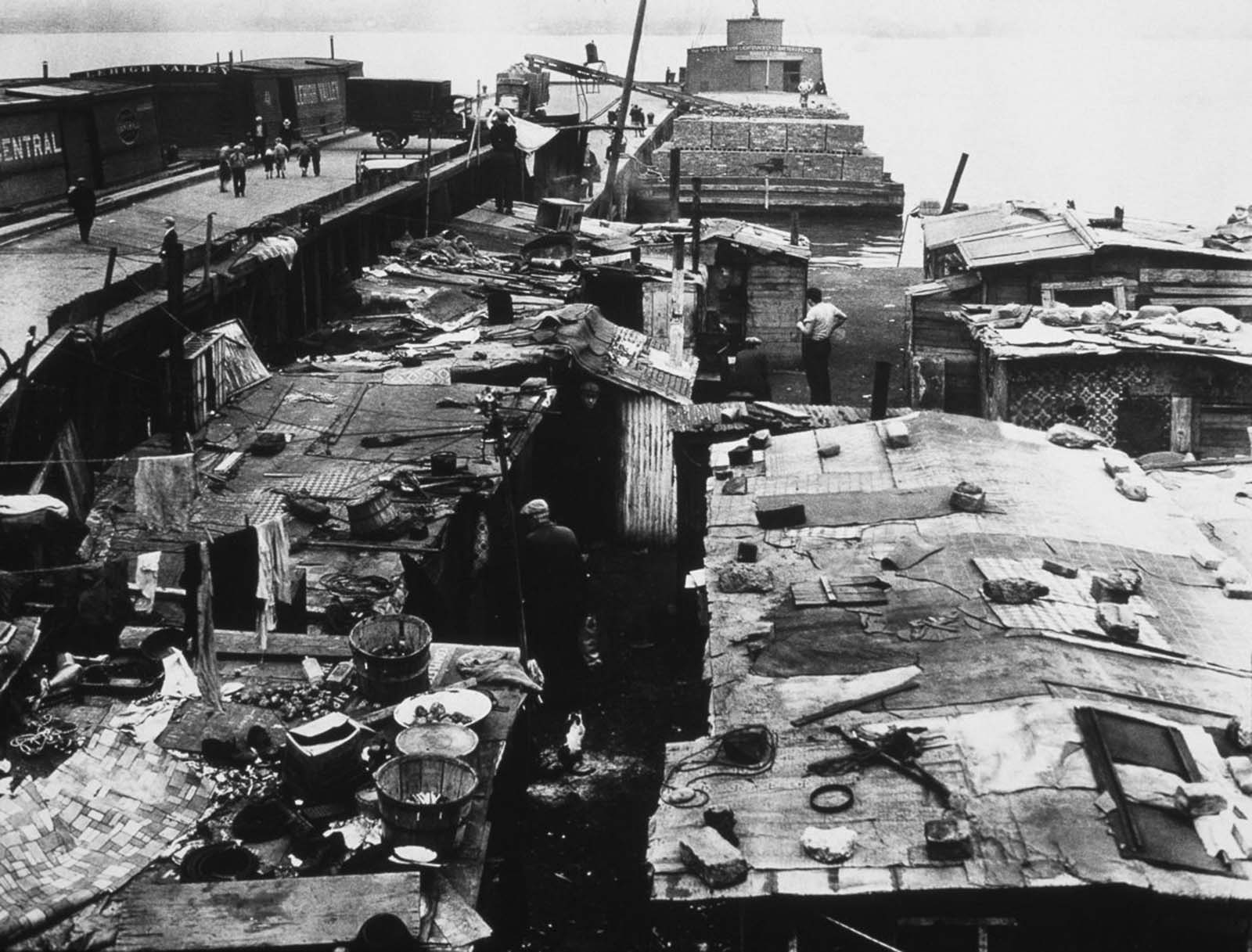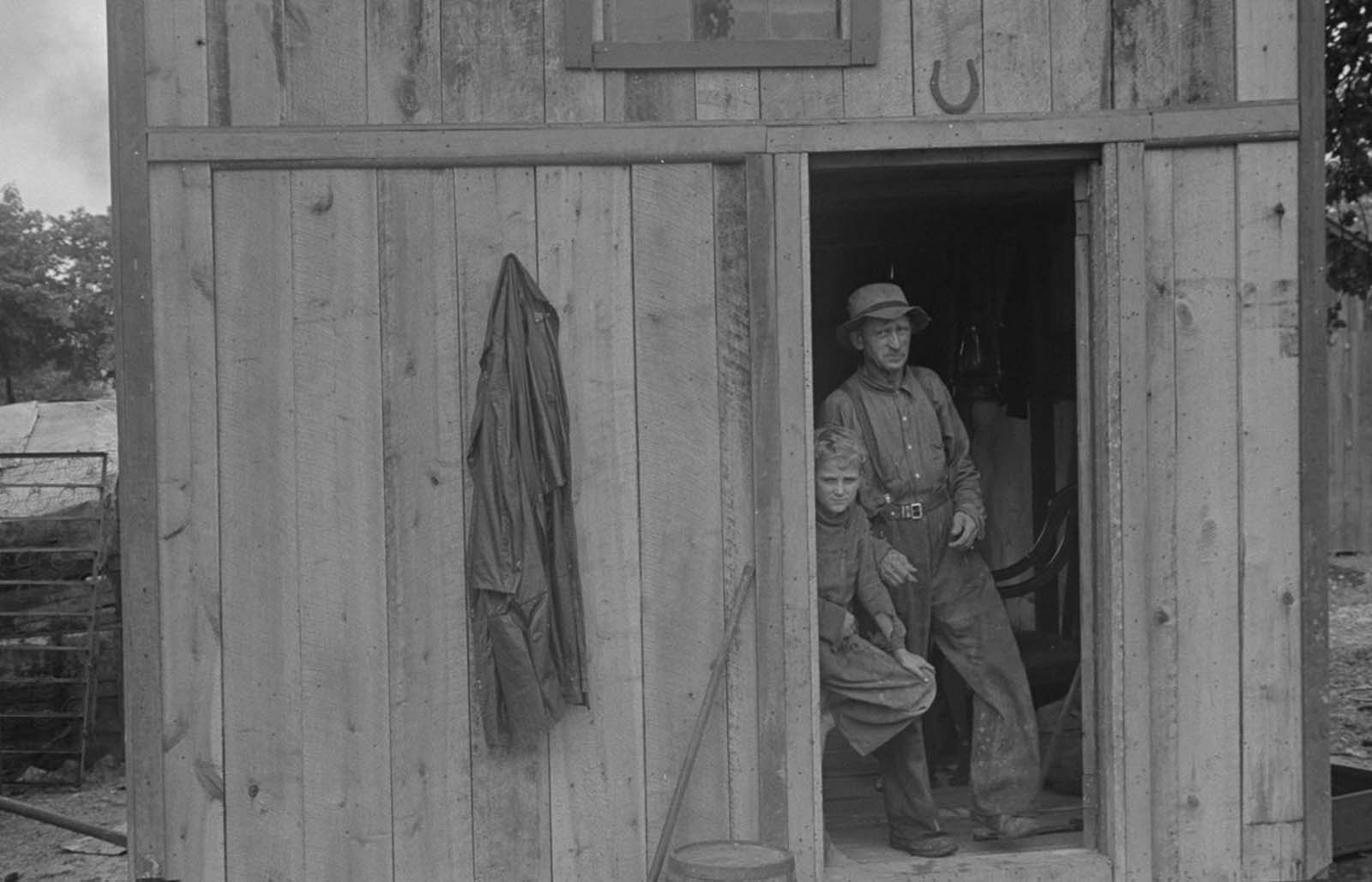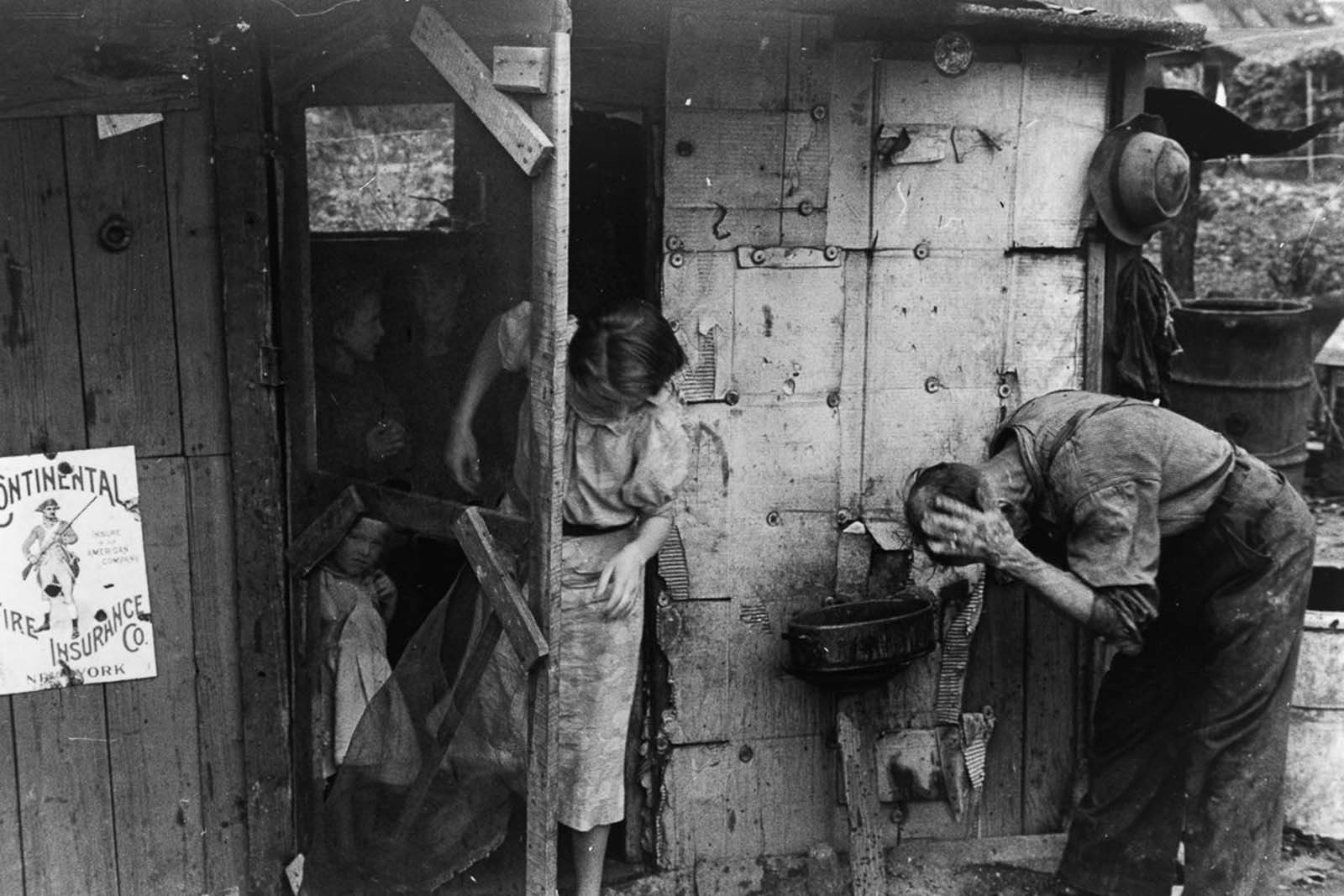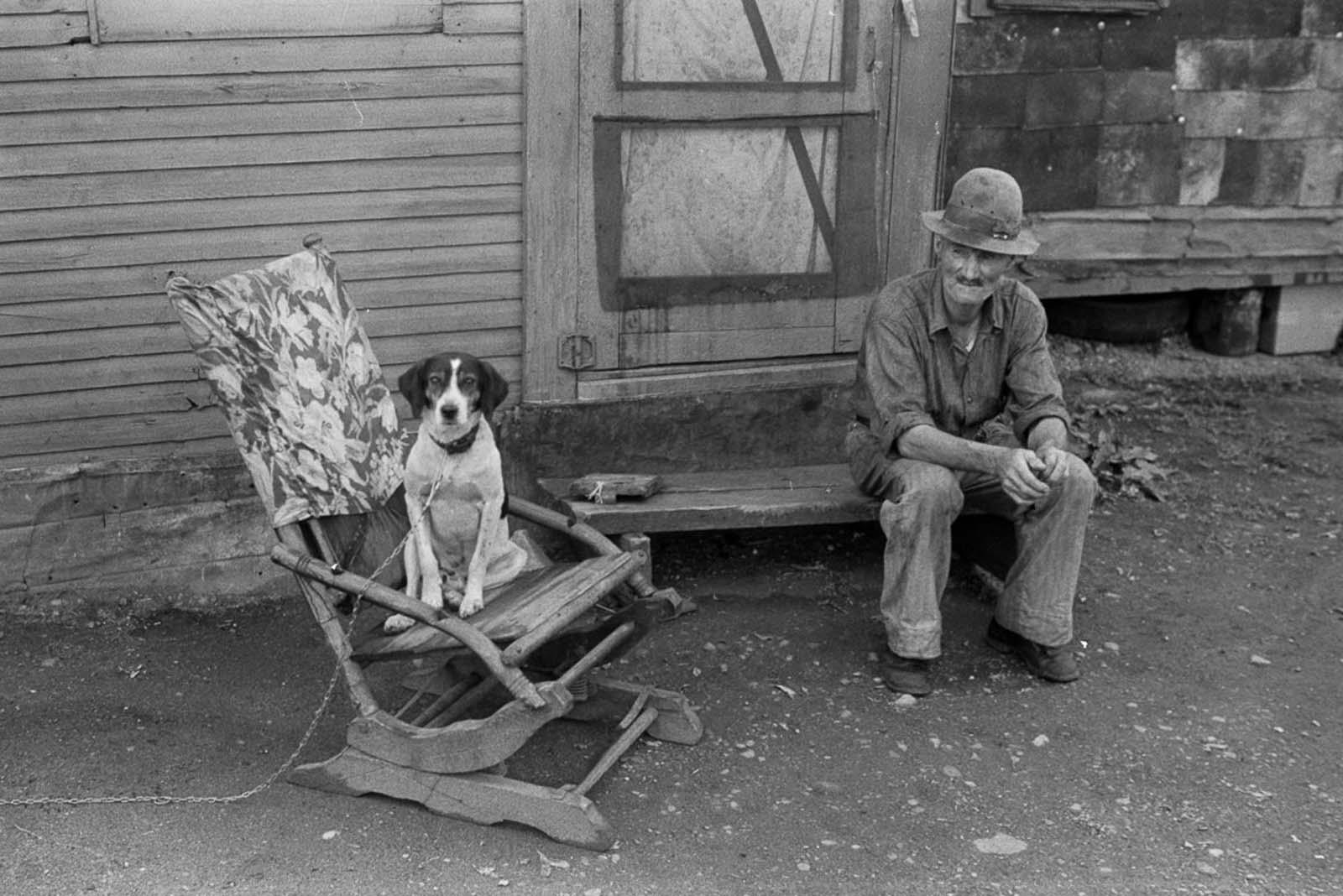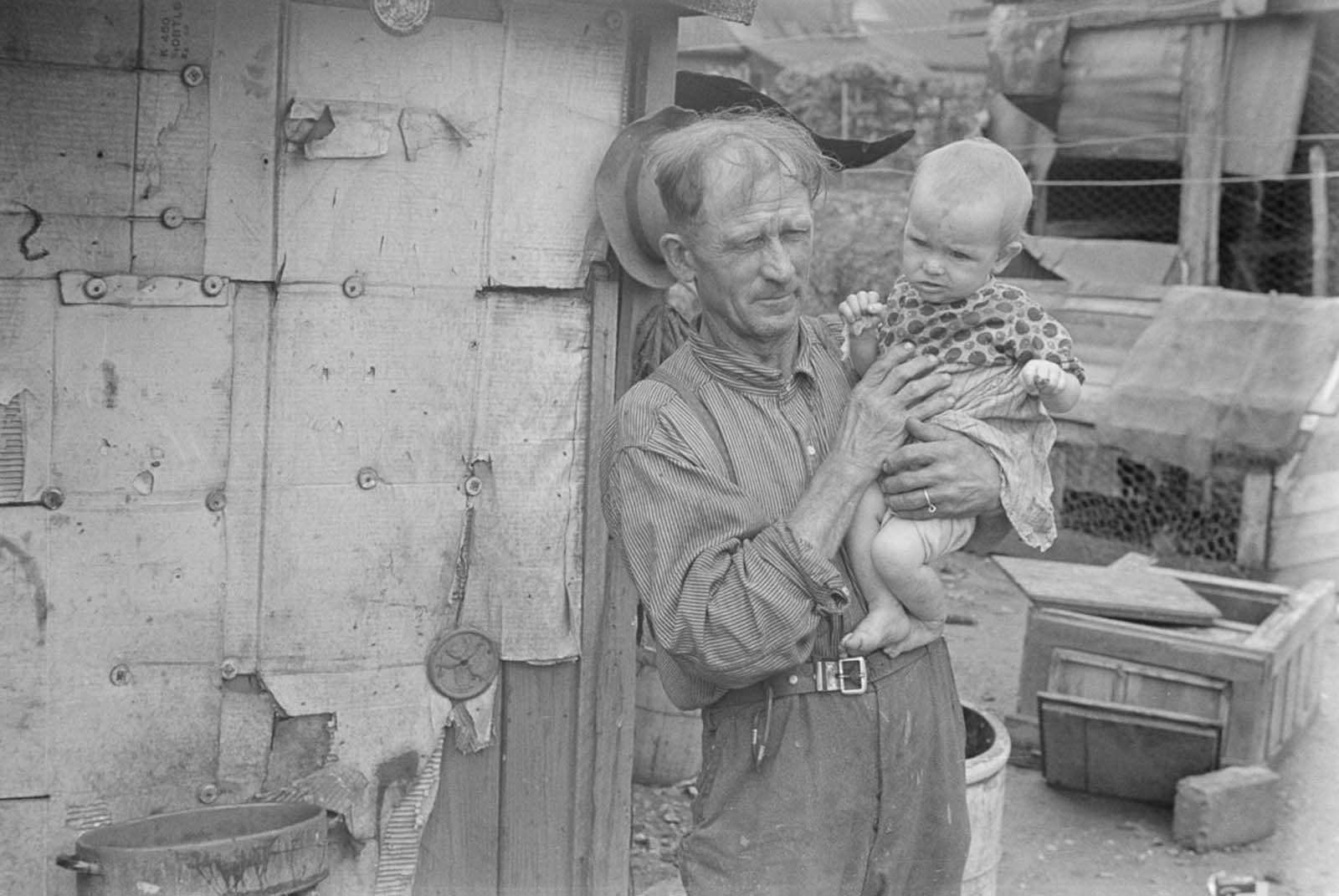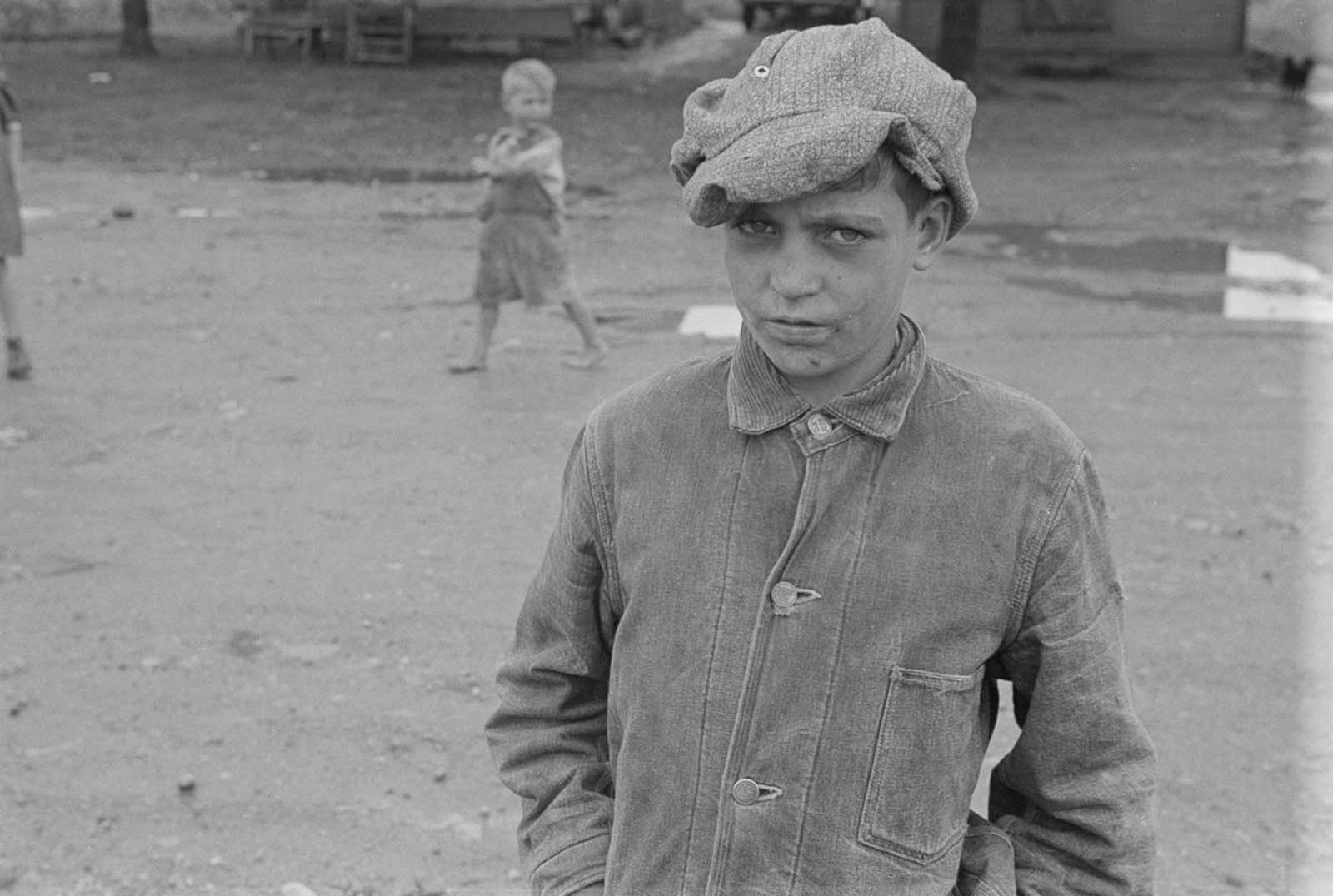They were named after Herbert Hoover, who was President of the United States during the onset of the Depression and was widely blamed for it. Americans affixed the president’s name to these shanty towns because they were frustrated and disappointed with Hoover’s inability to effectively deal with the growing economic crisis. Shocked and confused by the crisis, they held Hoover personally responsible for the state of the economy. Most large cities built municipal lodging houses for the homeless, but the Depression exponentially increased demand. The homeless clustered in shanty towns close to free soup kitchens. These settlements were often trespassing on private lands, but they were frequently tolerated or ignored out of necessity. Some of the men who were made to live in these conditions possessed building skills and were able to build their houses out of stone. Most people, however, resorted to building their residences out of boxwood, cardboard, and any scraps of metal they could find. Some individuals even lived in water mains or slept on the ground. Most were forced to resort to begging for food from those fortunate enough to obtain housing during this era. Several other terms came into use during this era, such as “Hoover blanket” (old newspaper used as blanketing) and “Hoover flag” (an empty pocket turned inside out). “Hoover leather” was cardboard used to line a shoe with the sole worn through. A “Hoover wagon” was a car with horses tied to it because the owner could not afford gasoline. One of the most famous Hoovervilles was the one located in New York City, on what is now Central Park’s Great Lawn. When the stock market crashed in 1929, it occurred just as a rectangular reservoir north of Belvedere Castle was being taken out of service. By 1930, a few homeless people set up an informal camp at the drained reservoir but were soon evicted. But, having nowhere to go, they would come back and as New Yorkers’ sentiment became more sympathetic, they were allowed to stay. Called “Hoover Valley,” the reservoir soon sported a number of shacks on what was labeled “Depression Street.” One was even built of brick with a roof of inlaid tile constructed by unemployed bricklayers. Others built a dwelling from stone blocks of the reservoir, including one shanty that was 20 feet tall. Though the settlement could not have been popular with the tenants of the new Fifth Avenue and Central Park West apartments, they mounted no protest. There were other such settlements in New York – one called “Hardlucksville” which boasted some 80 shacks between Ninth and 10th Streets on the East River. Another called “Camp Thomas Paine” existed along the Hudson in Riverside Park. The Central Park disappeared sometime before April 1933 when work on the reservoir landfill resumed. In Seattle, Washington stood one of the largest, longest-lasting, and best documented Hoovervilles in the country, standing for ten years, between 1931 to 1941. Chicago, Illinois Hooverville sprung up at the foot of Randolph Street near Grant Park, which also claimed its own form of government, with a man named Mike Donovan, a disabled former railroad brakeman and miner, as its “Mayor.” In an interview with a reporter, Donovan would say “Building construction may be at a standstill elsewhere, but down here everything is booming. Ours is a sort of communistic government. We pool our interests and when the commissary shows signs of depletion, we appoint a committee to see what leavings the hotels have.” After 1940 the economy recovered, unemployment fell, and shanty housing eradication programs destroyed all the Hoovervilles.
(Photo credit: Library of Congress / Universal History Archive / Getty Images / NY Daily News Archive / Wikipedia and Wiki Commons). Notify me of new posts by email.
Δ Subscribe
